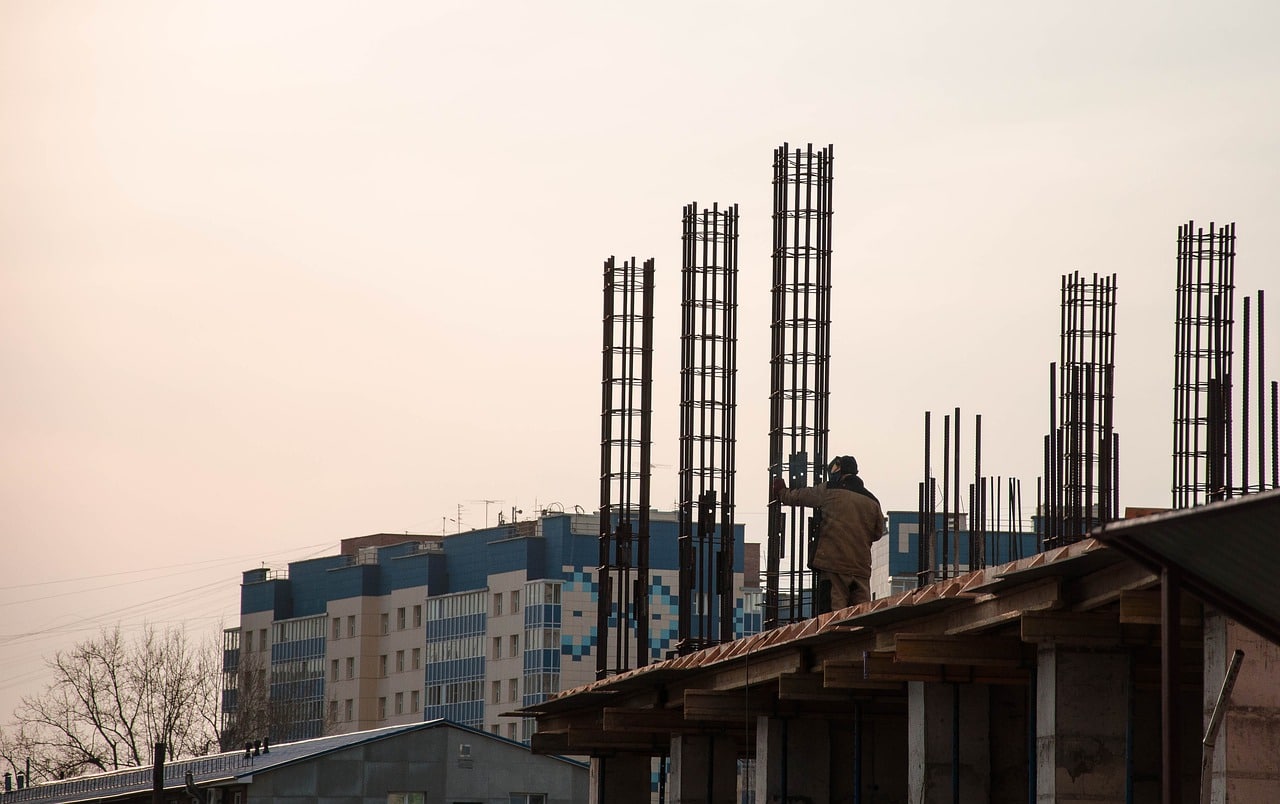The term construction management, in its most common use, refers to the act of managing the construction process. The construction manager, who may be a contractor, project manager, superintendent, or one of their representatives, manages the basic resources of the construction project.
These resources include workers and subcontractors, equipment and construction plant, materials, money, and time. Competent construction management results in the completion of a project on time and within budget. Mediocre construction management practices, conversely, often result in one or more of the following:
- Project delays that raise labour and equipment costs (and borrowed funds)
- High material costs as a consequence of poor purchasing methodologies, inefficient handling, and/or loss
- A poor relationship between contractor and subcontractors and increased subcontractor cost
- High insurance costs caused by damage or loss in material and equipment, or a poor safety record
- Low-profit margin or a loss of construction volume
These problematic management practices will inescapably lead to contractor failure. Other than the principal objectives of completing the project on time and within budget, every construction manager has a number of other important duties. These include safety, worker solidarity, public and professional relations, productivity growth, innovation and improvement of technology.
How do you manage construction projects effectively?
Skillful construction management centers around improving or tackling the issues of poor management practice. Here are ten construction management strategies that compound to work together around the framework of the project life cycle.
1. Decide on a project delivery system that is collaborative from the start
Before the designer or architect for a project can be selected or before any planning activity can be initiated, the project owner has to make two important decisions – deciding on the relationships among various stakeholders and choosing the payment basis upon which the contractor will be awarded.
There are a lot of traditional delivery systems but comparative studies have shown poor project performance criteria. The schedule delays and budget overruns from (1) traditional design–tender–build, (2) design–build, (3) build–own–operate–transfer, and (4) other traditional delivery systems are targeted by the contemporary integrated product delivery (IPD) method. IPD is a more collaborative way of working that involves people, systems, business structures, and practices into a process that mobilises the skills and insights of all project participants to optimise project productivity and maximise efficiency. This collaborative delivery method brings all the stakeholders together early on and allows data-driven decision making early in the project. This type of collaborative delivery system reduces a lot of waste in the design process and bridges the gap between design and construction through direct data sharing, which increases construction productivity.
The type of contract for construction services can be: (1) lump sum/fixed price, (2) unit price/measure and value, (3) cost-plus, (4) time and materials. Take note that some types of contracts are better suited for particular types of project delivery systems. However, to further the objectives of integrated project delivery, a multi-party agreement is executed for single contracts specifying relevant roles, obligations, and liabilities.
By deciding on an integrated project delivery system prior to the start of the construction project, you are making a clear point to all project members that you are focused on a team-based approach to create faster delivery times, lower costs and an enjoyable collaborative process for the entire team.
2. Clearly define the different parties and their roles
By clearly defining the actual roles of the construction project stakeholders and team members, you will reduce confusion and misinterpretation of the roles of some of the professionals in the management of the construction project. The clear descriptions provide a better understanding of all the stakeholders involved in the project delivery and encourage the attainment of stakeholder objectives while eliminating any delay and incompetence that may result from the confusion. In studying previous construction cases, the absence of clear role definitions has resulted in wastage of resources in the form of:
- Poor workmanship
- Unnecessary reworks
- Building collapses
- Inadequate specifications
- Overdesigning
The construction team is usually made up of the following professionals: (1) the architects and some engineering professionals carry out the designs of the buildings, (2) the builders execute the construction process, (3) the project manager supervises the entire construction process, and (4) other technical supporting professionals and specialists.
3. Select your contractor methodically
Because contractors influence the outcome of your project, choosing your construction contractor is a critical part of the construction management process. Selecting a qualified and competent contractor increases your construction project’s chances of completion. Although there are technical evaluation criteria for selecting the construction project contractor, here is a practical list of the components when screening for your project:
- Financial standing: Examine the contractor candidate’s financial stability, profit, turnover, and owned financial funds.
- Technical ability: Look at the contractor’s technical history in terms of experience, plant and equipment, and personnel.
- Management capability: Evaluate the contractor’s past performance and quality, quality control policy, quality management system, project management system, technical personnel experience, and knowledge in management.
- Quality, safety, senior management, including experience, tenure with the firm, and division of responsibilities.
- Current projects/backlogs, including project details, size and location, percentage of capacity being utilised, status and expected completion, past failures in completed projects, number of years in construction, past client and subcontractor relationships, and cooperation with contractors.
4. Prepare a data-driven programme, plan and schedule
Once the contract is on hand and the project mobilisation phase is underway, the contractor will develop and create a more detailed plan and schedule that would suit the projects’ time dimensions. This project plan will be used to assist with fielding personnel and equipment, acquiring materials and supplies and planning cash flows. It will also prepare the basis for monitoring and controlling project progress as the construction project moves along.
Free ebook: 6 keys to staying competitive
The terms programme and schedule are typically used interchangeably. The overall document that represents the project’s entire schedule is called the master schedule or master programme. Using available data to generate your construction plan and schedule provides better estimates and schedules, prevents costly mistakes and impacts your overall efficiency. Having data-driven planning and scheduling processes allows for transparency and accountability.
5. Have a material procurement and subcontracting plan
Material procurement and subcontracting are two distinct parts of the buyout process, which is the part of project mobilisation where you start procuring the materials and equipment and arranging subcontractors needed for the project. Whether you centralise your procurement process in the main office or carry it out on site, you should standardise your processes.
The same applies for arranging subcontracts for portions of work that the contractor itself will not perform. You need to standardise which work portions are to be turned over to the specialists or subcontractors. Materials and subcontracted labour play important roles in project planning and control. Having a solid plan for your material procurement and subcontracting minimises purchase and labour costs.
6. Monitor and control your project operations (QHSE)

Your master programme represents the plan for the schedule of your construction work while the budget is the plan for the cost aspects. Similarly, your contractor will have management plans for your project’s quality, safety, and environmental concerns. As you proceed with project operations, comparing the actual construction performance with the plan in all these areas is critical, so are the actions needed to be taken to fix any indicated non-conformities or deficiencies.
This part of construction management is called monitoring and control – monitoring being the act of comparing the actual with the planned performance and control denoting the actions taken to remedy the project aspects that do not conform to the planned performance. Special attention should be given to the control of construction quality, safety and health, and environmental hazards. Monitoring and control are very crucial management functions that ensure project objectives are successfully achieved.
7. Manage your resources (materials, equipment, labour)
The four main resources to be managed are (1) manpower, (2) machines, (3) materials, and (4) money.
Focusing on training your manpower arms your teams with the skills and knowledge of owning their tasks, with the capability to complete them fast and successfully. Correct management of machines and materials also boost efficiency while the ability to manage your money goes a long way to solidify your company’s financial stability.
8. Have a documentation and communication system in place
Including construction software that supports cloud documentation and communication for your on-site processes encourages effective collaboration that facilitates efficiency and boosts productivity. As construction projects become even more dynamic, having a tool to keep track of everything in real time bridges the gaps in communication and collaboration.
9. Manage and prevent issues while on site

By using data and analysing what is important in real time, you can track and predict issues before they can even occur. Accurate forecasting helps you avoid delays and remedy them if they occur. Finding the right tool for your needs empowers you with preventative capabilities that would save you time and money.
10. Have a stringent and efficient project handover process
Digitalising your handover process allows you to share data and information simply yet accurately. A digital handover improves your delivery efficiency, speed and safety, and saves you a lot of time. For you to transition smoothly, you will need to find the correct digital tool that will support your handover procedures.
How LetsBuild can help you
Construction management is a broad discipline that covers all major aspects of the construction process including construction contracts, construction methods, construction materials, production and cost estimates, progress and cost control, quality control and safety. However, with a carefully considered strategy and the use of the right digital solution, you can put an end on costly interruptions and ensure that your project is delivered on time and on budget.
LetsBuild can help you manage your projects seamlessly from conception to handover. Office and site teams communicate with each other in real time, and everything is linked to the project plan that is updated frequently to reflect reality.
Like that, project teams can flag critical issues quickly avoiding costly interruptions and delays on site. With LetsBuild, construction companies can improve project efficiency by 15%-25%, cut project delays by up to 30% and reduce cost by up to 15%.




